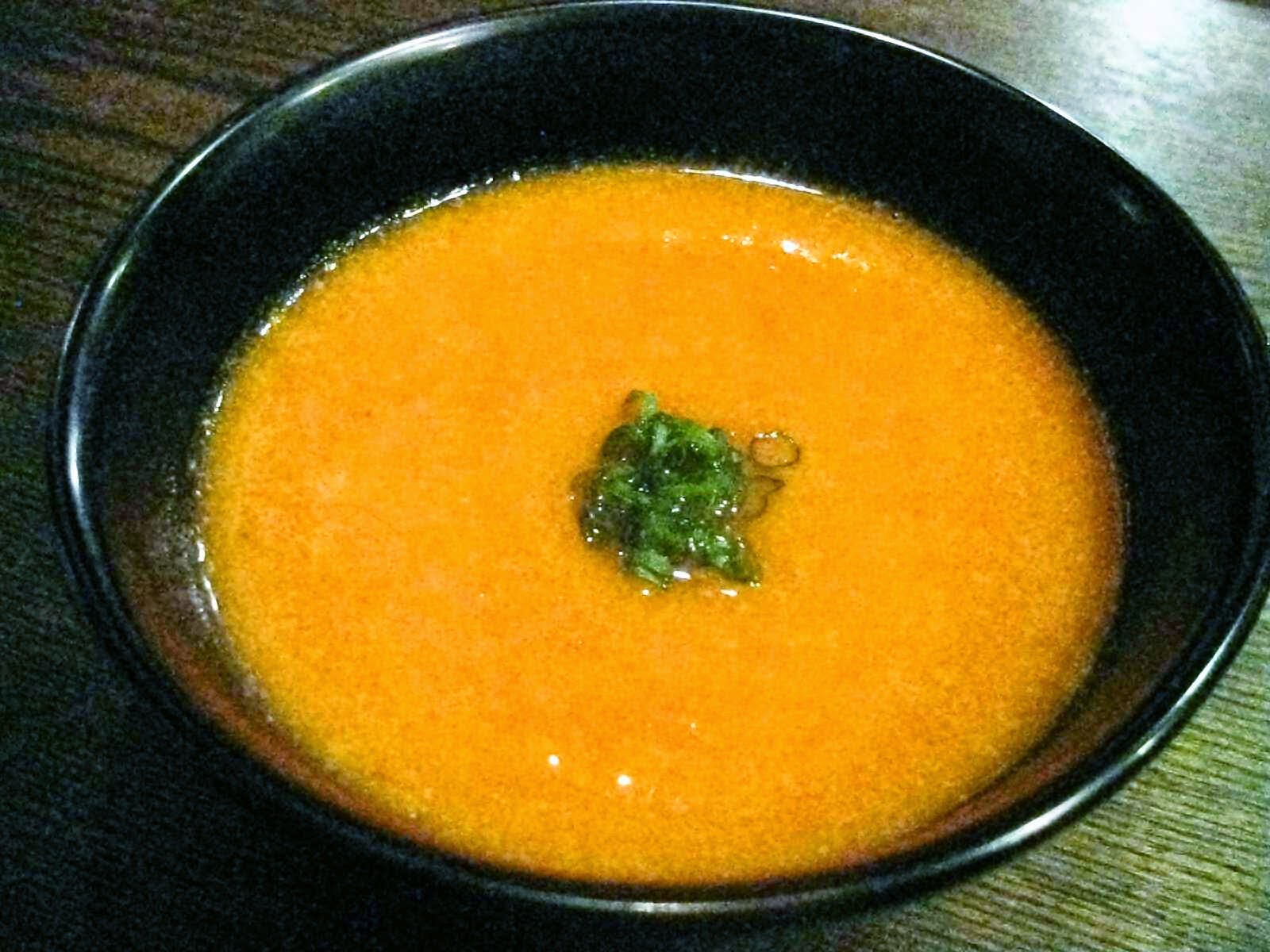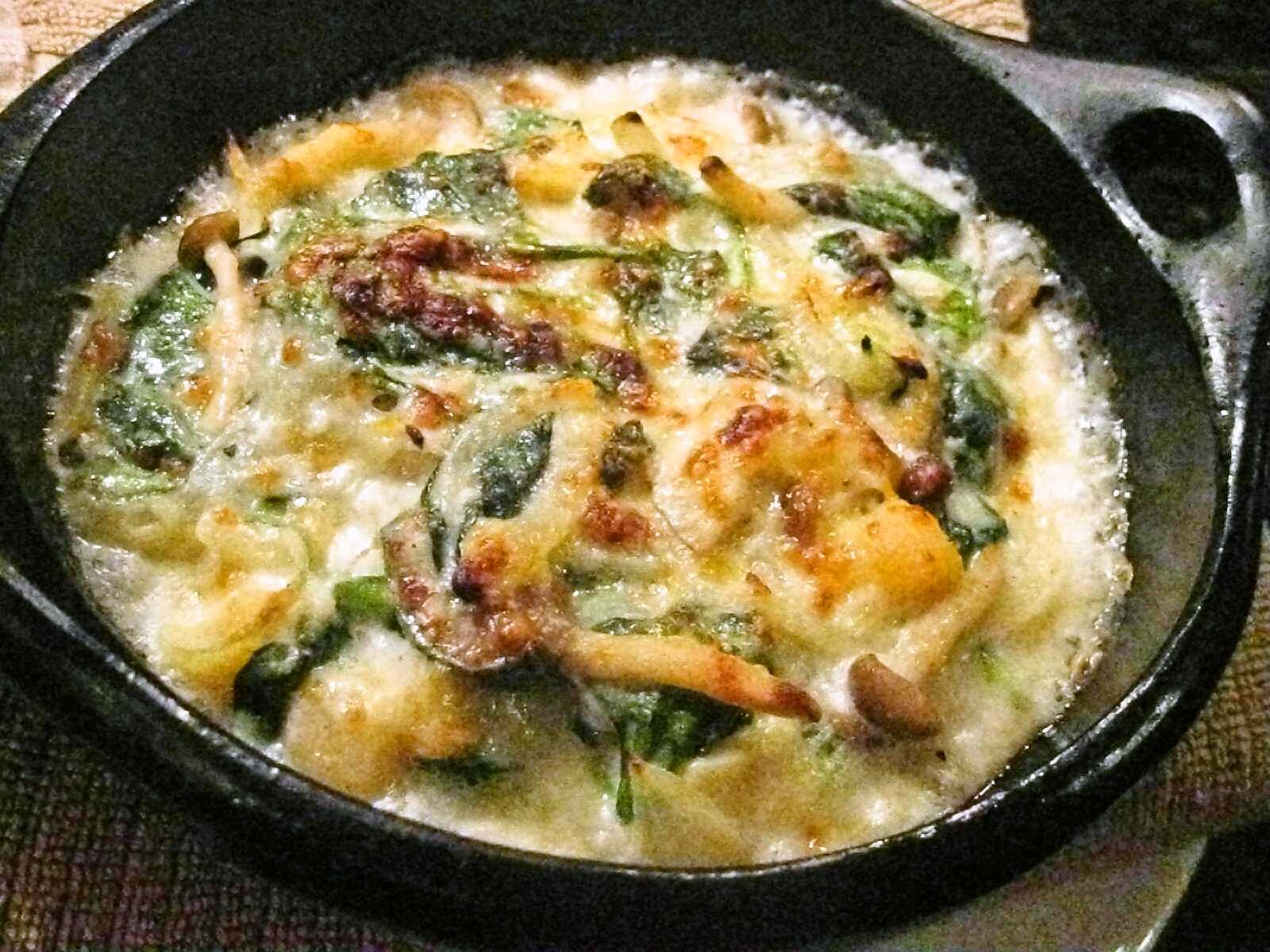All recipes are for 2 servings unless noted. Oil is canola oil and salt is kosher salt.
2014-01-30
Hoshigaki / dried persimons
In fall through winter, orange persimmons are often seen hanging under the eaves of houses in the countryside of Japan. Okagami or kagami mochi -- double- or triple-tiered round rice cakes offered to Shinto deities during the New Year holiday– were always accompanied by a few dried persimmons on a skewer in my family. As with many other dried foods, I used to have a strong image that dried persimmons were for old people, perhaps thinking that we kids have chocolates and candies. I don't know what today's kids think, but this simple preserved fruit has a strikingly sweet and slightly nutty taste. While any persimmon works, if you come across some awfully bitter ones, try peeling and hanging them, and wait for some weeks for the amazingly sweet makeover.
2014-01-28
Kiriboshi-daikon to itokon iri yasai yakisoba / vegetable fried noodles with julienned dried daikon radish and konnyaku noodles
Packaged yakisoba noodles with seasoning packs are loaded with sodium -- many products have over 1,000mg per serving. Avoiding them is one solution, but there are other things we can do, such as adding noodle-like ingredients to replace part of the noodles in the package and tweaking seasonings. Kiriboshi-daikon julienned dried daikon radish, one of the noodle substitutes here, has a chewy texture and is rich in fiber and full of umami, providing more than a few advantages. Another yakisoba noodle substitute, itokonnyaku noodles, make this dish low in calories.
One pack of noodles and one pack of seasoning make two servings.
1/2 of recipe:
248 calories; 7.3 g protein; 3.7 g fat; 47.8 g carbohydrate; 39.4 g net carbs; 488 mg sodium; 2 mg cholesterol; 8.4 g fiber
One pack of noodles and one pack of seasoning make two servings.
1/2 of recipe:
248 calories; 7.3 g protein; 3.7 g fat; 47.8 g carbohydrate; 39.4 g net carbs; 488 mg sodium; 2 mg cholesterol; 8.4 g fiber
2014-01-24
Papurika no surinagashi / miso soup with red bell pepper
Tom's favorite vegetable, red bell pepper, is transformed into a sweet, slightly sour miso soup. Hakusai napa cabbage and cauliflower along with tonyu soy milk soften the overall taste.
1/2 of recipe:
81 calories; 5.4 g protein; 1.8 g fat; 12.5 g carbohydrate; 9.4 g net carbs; 228 mg sodium (with reduced-sodium miso; 288 mg with regular miso); 0 mg cholesterol; 3.1 g fiber
1/2 of recipe:
81 calories; 5.4 g protein; 1.8 g fat; 12.5 g carbohydrate; 9.4 g net carbs; 228 mg sodium (with reduced-sodium miso; 288 mg with regular miso); 0 mg cholesterol; 3.1 g fiber
Labels:
2 easy,
30 min,
bell pepper,
cauliflower,
grill,
hakusai,
Recipes - Japanese,
reduced sodium,
simmer,
soup,
soy milk,
tonyu
2014-01-23
2014-01-22
Satsumaimo no tenpura, shungiku to gobo, ebi no kakiage / deep-fried Japanese sweet potato & mixed tempura with garland chrysanthemum, burdock root and prawns
The sweetness of satsumaimo sweet potato is striking, making it a good companion to the distinctive flavor of shungiku garland chrysanthemum and deep flavor of gobo burdock root. Prawns added to kakiage also have a sweet note, linking everything together. In the recipe below, tempura pieces are served over rice, a dish known as tendon.
For tendon with 150 g steamed rice, 1 satsumaimo tempura & 1 kakiage mixed tempura, and 2 1/2 tbsp tentsuyu dipping sauce per serving:
510 calories; 11.3 g protein; 12.8 g fat; 82.6 g carbohydrate; 80.8 g net carbs; 252mg sodium (tentsuyu made with 50% reduced-sodium soy sauce; 442 mg with regular soy sauce); 51 mg cholesterol; 1.8 g fiber
For tendon with 150 g steamed rice, 1 satsumaimo tempura & 1 kakiage mixed tempura, and 2 1/2 tbsp tentsuyu dipping sauce per serving:
510 calories; 11.3 g protein; 12.8 g fat; 82.6 g carbohydrate; 80.8 g net carbs; 252mg sodium (tentsuyu made with 50% reduced-sodium soy sauce; 442 mg with regular soy sauce); 51 mg cholesterol; 1.8 g fiber
Labels:
3 moderate,
30 min,
deep-fry,
gobo,
prawns,
Recipes - Japanese,
reduced sodium,
rice,
satsumaimo,
shrimp,
shungiku,
tentsuyu
2014-01-21
Ebi-shinjo to yasai ribon no nabe / hot pot with prawn-fish dumplings and vegetable ribbons
Vegetable ribbons and fluffy prawn-fish dumplings turn regular nabe hot pot into something special. Put prawn-fish dumplings in the nabe first, as they taste richer as they cook with other ingredients.
1/2 of recipe:
525 calories; 32.5 g protein; 14.8 g fat; 61.5 g carbohydrate; 59.9 g net carbs; 502 mg sodium (with 50% reduced-sodium soy sauce for both broth and ponzujoyu; 743 mg with regular soy sauce); 179 mg cholesterol; 7.6 g fiber
1/2 of recipe:
525 calories; 32.5 g protein; 14.8 g fat; 61.5 g carbohydrate; 59.9 g net carbs; 502 mg sodium (with 50% reduced-sodium soy sauce for both broth and ponzujoyu; 743 mg with regular soy sauce); 179 mg cholesterol; 7.6 g fiber
2014-01-20
2014-01-19
Daikon, ninjin, age no itameni / daikon radish, carrot and thin deep-fried tofu saute simmered in broth (reduced-sodium version)
Featuring daikon radish, carrot and thin deep-fried tofu, this is a reduced-sodium version of my kind of everyday dish. As making less is one way to cut back on sodium, the recipe below is for half of the original amount, which makes it ideal as a small side dish at the table or as a good portion for bento boxes. Rice vinegar does the trick of leaving a sharp tingling sensation, helping you to forget about there being little salty seasoning.
1/2 of recipe:
57 calories per serving; 1.8 g protein; 2.2 g fat; 6.1 g carbohydrate; 4.5 g net carbs; 98 mg sodium (with 50% reduced-sodium soy sauce; 174 mg with regular soy sauce); 0 mg cholesterol; 1.6 g fiber
1/2 of recipe:
57 calories per serving; 1.8 g protein; 2.2 g fat; 6.1 g carbohydrate; 4.5 g net carbs; 98 mg sodium (with 50% reduced-sodium soy sauce; 174 mg with regular soy sauce); 0 mg cholesterol; 1.6 g fiber
Labels:
1 very easy,
30 min,
bento,
carrots,
daikon,
kurozu,
Recipes - Japanese,
reduced sodium,
saute,
shiokoji,
simmer,
usuage
2014-01-17
Tom cooks 15. Poo ob woon sen (steamed crab with mung bean noodles)
One afternoon, Tom promised he would cook a harusame mung bean vermicelli dish with crab. Within a few days he modified his words to "I'll go get a crab, and you cook it," but of course this did not work for me. My answer was, "You cook it."
When I went down to the kitchen to check on him, I saw an ambiguous smile plastered on his face.
When I went down to the kitchen to check on him, I saw an ambiguous smile plastered on his face.
2014-01-10
Shinshu-mushi / white-flesh fish steamed with soba noodles
Labels:
3 moderate,
60 min,
blanch,
boil,
fish,
noodles,
Recipes - Japanese,
reduced sodium,
shimeji,
shungiku,
soba,
steam
2014-01-07
Fu to kobashira no guratan / wheat gluten cake gratin with bay scallops (bechamel sauce version)
A light gratin featuring fluffy fu gluten cakes.
1/2 of recipe (with bechamel sauce made with milk; no additional salt)
326 calories; 20.3 g protein; 15.5 g fat; 26.1 g carbohydrate; 22.9 g net carbs; 286 mg sodium (251 mg sodium when rehydrating fu with soy milk); 62.2 mg cholesterol (52.2 mg sodium when rehydrating fu with soy milk); 3.2 g fiber
1/2 of recipe (with bechamel sauce made with tonyu soy milk, no additional salt)
312 calories; 21.2g protein; 14.0 g fat; 24.9 g carbohydrate; 20.7 g net carbs; 246 mg sodium (211 mg sodium when rehydrating fu with soy milk); 49.2 mg cholesterol (39.2 mg sodium when rehydrating fu with soy milk); 4.2 g fiber
1/2 of recipe (with bechamel sauce made with milk; no additional salt)
326 calories; 20.3 g protein; 15.5 g fat; 26.1 g carbohydrate; 22.9 g net carbs; 286 mg sodium (251 mg sodium when rehydrating fu with soy milk); 62.2 mg cholesterol (52.2 mg sodium when rehydrating fu with soy milk); 3.2 g fiber
1/2 of recipe (with bechamel sauce made with tonyu soy milk, no additional salt)
312 calories; 21.2g protein; 14.0 g fat; 24.9 g carbohydrate; 20.7 g net carbs; 246 mg sodium (211 mg sodium when rehydrating fu with soy milk); 49.2 mg cholesterol (39.2 mg sodium when rehydrating fu with soy milk); 4.2 g fiber
Labels:
3 moderate,
60 min,
bake,
bay scallops,
fu,
milk,
onions,
Recipes - Western,
reduced sodium,
saute,
seafood,
shimeji,
shiokoji,
soy milk,
spinach,
tonyu,
vegetables
2014-01-05
Breakfast, January 1, 2014
We were grateful to be at the table to enjoy the osechi New Year's meal this year, although the number of items was fewer than in previous years. I am still in the process of figuring out the balance between less sodium and good flavor, especially with simmered dishes, and this year's osechi preparation basically became a series of experiments for that purpose.
 All the dishes were made to contain less sodium by simply reducing the amount of seasonings, replacing seasonings or changing preparation methods. Some dishes were a bit disappointing in terms of needing more saltiness or tasting overly sweet; some turned out saltier than expected, showing there was more room to cut back. I did, however, make all my standard osechi dishes that carry wishes of good health -- kuromame black soybeans, tataki gobo burdock root and ebi no umani prawns. Tom has regained his strength and is in amazingly good shape, thanks to his active routine prior to cardiac collapse. We hope his health continues to improve this year.
All the dishes were made to contain less sodium by simply reducing the amount of seasonings, replacing seasonings or changing preparation methods. Some dishes were a bit disappointing in terms of needing more saltiness or tasting overly sweet; some turned out saltier than expected, showing there was more room to cut back. I did, however, make all my standard osechi dishes that carry wishes of good health -- kuromame black soybeans, tataki gobo burdock root and ebi no umani prawns. Tom has regained his strength and is in amazingly good shape, thanks to his active routine prior to cardiac collapse. We hope his health continues to improve this year.
 All the dishes were made to contain less sodium by simply reducing the amount of seasonings, replacing seasonings or changing preparation methods. Some dishes were a bit disappointing in terms of needing more saltiness or tasting overly sweet; some turned out saltier than expected, showing there was more room to cut back. I did, however, make all my standard osechi dishes that carry wishes of good health -- kuromame black soybeans, tataki gobo burdock root and ebi no umani prawns. Tom has regained his strength and is in amazingly good shape, thanks to his active routine prior to cardiac collapse. We hope his health continues to improve this year.
All the dishes were made to contain less sodium by simply reducing the amount of seasonings, replacing seasonings or changing preparation methods. Some dishes were a bit disappointing in terms of needing more saltiness or tasting overly sweet; some turned out saltier than expected, showing there was more room to cut back. I did, however, make all my standard osechi dishes that carry wishes of good health -- kuromame black soybeans, tataki gobo burdock root and ebi no umani prawns. Tom has regained his strength and is in amazingly good shape, thanks to his active routine prior to cardiac collapse. We hope his health continues to improve this year.
Subscribe to:
Posts (Atom)







_comp2.jpg)

